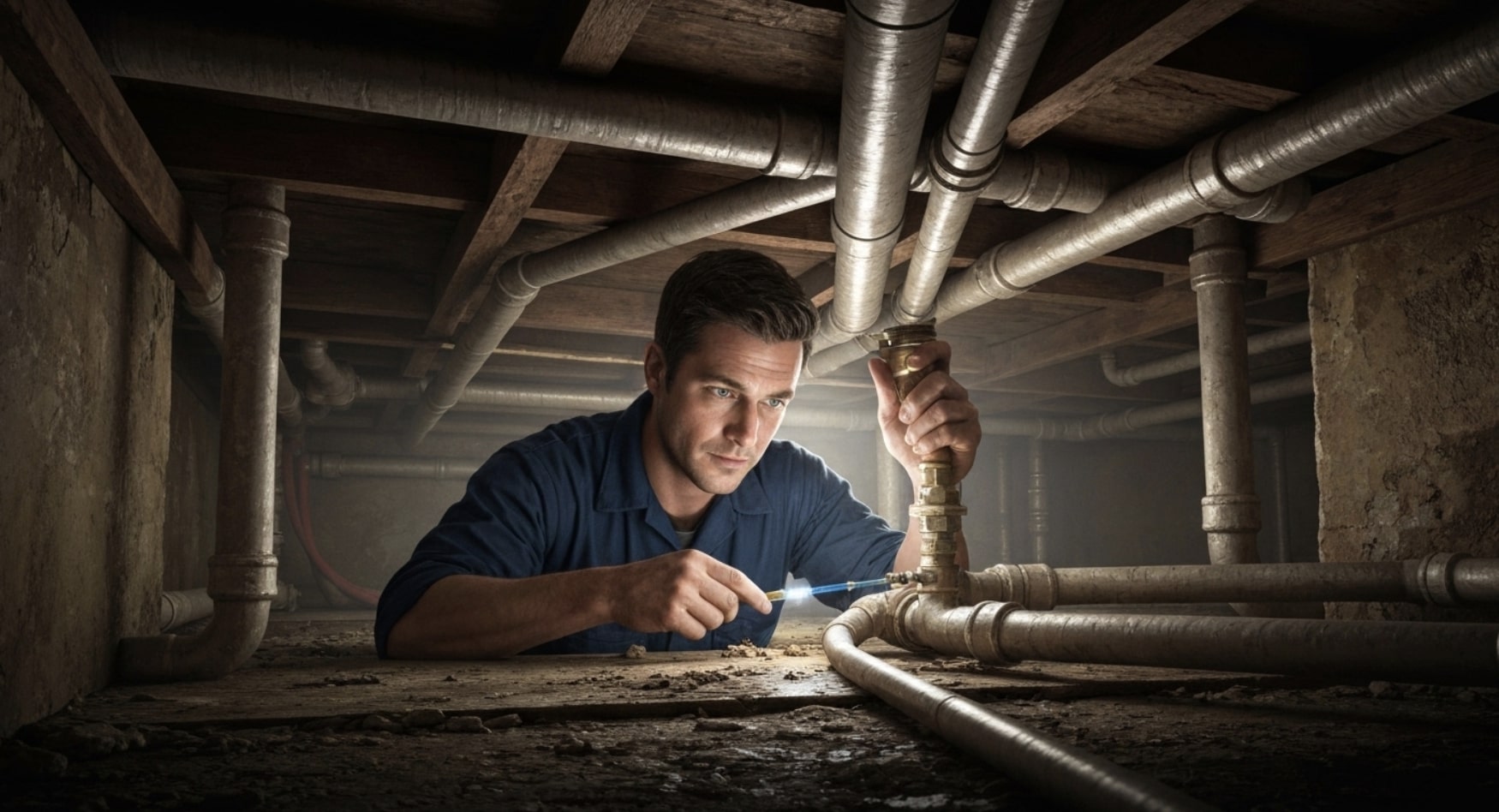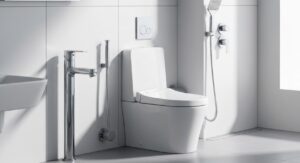Your home’s plumbing system works tirelessly behind the scenes, delivering clean water for countless daily tasks. Because these pipes are hidden behind walls and under floors, it’s easy to forget about them until a problem arises. However, older pipes can pose significant risks, from an unreliable water supply to severe water damage and health hazards. Knowing when to replace old pipes is key to protecting your home and ensuring your system runs smoothly for years to come.
The Consequences of Ignoring Pipe Replacement
Neglecting pipe replacement can lead to significant repercussions for your plumbing system. Old pipes often corrode and weaken, resulting in leaks that can compromise your water supply, damage your property, and create a breeding ground for mold and bacteria. Additionally, the cost of emergency repairs due to burst pipes can outweigh the investments made in timely replacements. Therefore, recognizing the signs of deterioration is crucial to prevent extensive maintenance issues and ensure the integrity of your plumbing infrastructure.
Understanding the Lifespan of Different Plumbing Pipes
You might assume that your home’s plumbing pipes are built to last a lifetime, but that isn’t always true. The longevity of your plumbing system heavily depends on the material it’s made from, as well as factors like water quality and regular maintenance. Different materials have vastly different lifespans.
Knowing the type of plumbing pipes in your home can give you a general idea of when a pipe replacement might be on the horizon. Let’s explore the common materials and how long you can expect them to last.
Factors to Consider for Replacing Old Pipes
Several essential factors influence the decision to replace old pipes within your plumbing system. Evaluating the age and material of the pipes is critical, as some materials have a shorter lifespan than others. Signs of wear and tear, such as leaks or rust, should also prompt consideration of pipe replacement. Additionally, the frequency of repairs can indicate impending failure, while assessing water quality ensures the integrity of the supply. Ultimately, weighing the cost of replacement against potential damages aids in making a prudent choice.
1. Age and Material of the Pipes
Pipes often have a defined lifespan that varies with their material. For instance, galvanized steel pipes can corrode within 20 years, while copper pipes may last closer to 50 years. As plumbing systems age, deterioration becomes more pronounced, leading to compromised water supply and increased leak risks. Assessing the material is crucial; outdated materials like polybutylene should be replaced sooner to avert costly plumbing failures. Staying informed about the age and type of pipes facilitates proactive pipe replacement, ensuring a reliable plumbing system.
2. Signs of Wear and Tear
Aging plumbing systems often exhibit subtle signs indicating the need for pipe replacement. Look for leaks, especially in older pipes, which can cause significant damage to your home. Discoloration in your water supply, rust, or unusual odors signal potential corrosion and deterioration. Frequent clogs and reduced water pressure may also suggest that the integrity of your plumbing pipes is compromised. These indicators, when combined, provide a clear message: proactive assessment is essential to prevent costly emergencies.
3. Frequency of Repairs
An increasing frequency of repairs often indicates that the plumbing system is reaching a critical point. Constantly addressing issues with older pipes can suggest a deteriorating condition, which may lead to more significant problems if ignored. Each visit from a plumber not only adds to your costs but also signals a potential failure of the pipe replacement process to effectively address underlying issues. By closely monitoring repair frequency, homeowners can preempt more severe plumbing failures and avoid compromising their water supply.
4. Water Quality and Corrosion
Water quality significantly impacts the integrity of your plumbing system. Corrosion can occur in older pipes due to chemical reactions between water and pipe material, leading to leaks and decreased water supply efficiency. If you notice discolored water or unusual tastes, it may indicate rust or contaminants, signaling the need for a pipe replacement. Regular assessments of water quality can help identify potential corrosion issues early, ensuring the longevity of your plumbing pipes and reducing the likelihood of costly damage down the line.
5. Cost of Replacement vs. Potential Damages
Weighing the cost of replacement against potential damages reveals critical insights for homeowners. While the initial expense of new plumbing pipes can seem daunting, it pales in comparison to the long-term repercussions of ignoring deteriorating old pipes. A sudden rupture can lead to significant water damage, mold growth, and costly repairs that far exceed the investment in preventative pipe replacement. Ultimately, proactive action can safeguard your plumbing system, ensuring a reliable water supply and avoiding unforeseen financial strain.
Choosing the Right Time for Pipe Replacement
Timing is crucial in the pipe replacement process to prevent inconveniences in your plumbing system. Monitoring the condition of your plumbing pipes, especially older pipes, can help identify the right moment for replacement. Consider factors like frequent leaks or corrosion, as these can indicate that your water supply will soon suffer. Regular inspections and maintenance ensure that you are proactive, not reactive, which ultimately saves time, money, and peace of mind when addressing potential plumbing failures.
Turn Plumbing Breakdowns into Peace of Mind with Target Plumbers
Dealing with failing older pipes is stressful, but you don’t have to handle it alone. Here at Target Plumbers, we turn plumbing problems into lasting solutions. As a family-owned and operated business, we believe in providing high-quality, efficient, and affordable service. We understand that a pipe replacement is a major undertaking, and our team is committed to making the process as smooth and transparent as possible.
With years of experience in the plumbing industry, our trained professionals have the knowledge to accurately evaluate your plumbing system and recommend the best course of action. We prioritize clear communication, giving you an accurate timeline and keeping you informed every step of the way. Trust Target Plumbers to restore your home’s plumbing and provide the peace of mind that comes with a safe and reliable water supply.
Conclusion
In summary, understanding when to replace old pipes is essential for maintaining a safe and efficient plumbing system in your home. By recognizing the signs of deterioration, such as corrosion, leaks, and decreased water pressure, you can prevent more costly repairs and health risks in the future. Each type of pipe comes with its own lifespan and set of challenges, so staying informed about their condition is crucial. If you’re considering a pipe replacement project, remember that the long-term benefits far outweigh the temporary disruptions.
Replacing old pipes is only part of the equation—ongoing care matters just as much. For practical ways to keep your plumbing system in top shape year-round, don’t miss our blog on Plumbing Maintenance Tips That Every Homeowner Should Know.
Frequently Asked Questions
How much does it usually cost to replace old pipes in a typical home?
The cost of replacing old pipes varies based on pipe type, home size, and installation complexity. On average, homeowners pay $1,000 to $5,000, but major renovations can cost more. For an accurate estimate, schedule a consultation with a Target Plumbers expert.
What is involved in the process of replacing old pipes in a home?
Replacing old pipes starts with inspecting the plumbing to identify problem areas. The water supply is then shut off, and old pipes are removed. New pipes—PVC, copper, or PEX—are chosen based on your home’s needs. Installation involves securing and aligning the new pipes for proper water flow.
How disruptive is pipe replacement for daily life?
While a pipe replacement process is a major project, professional plumbers work to minimize disruption. Modern materials like flexible PEX piping can often be installed with less demolition than older water pipes required. Your plumbing team will outline a clear plan to get the job done efficiently and restore your water as quickly as possible.
Are certain types of homes or ages more at risk for pipe failure?
Yes, older homes, especially those built before the 1980s, are at a higher risk. These homes often contain plumbing pipes made of galvanized steel, polybutylene, or lead, all of which are prone to corrosion and failure. If your home has its original plumbing system from this era, a professional inspection is highly recommended.






